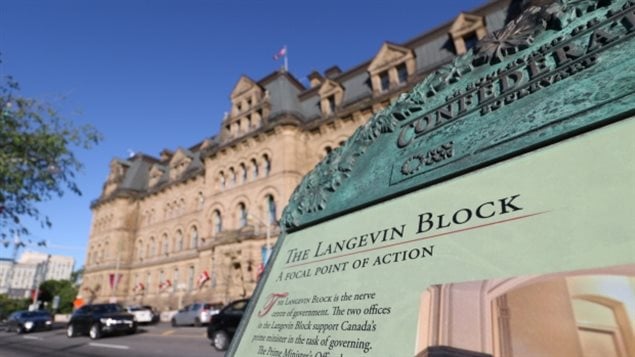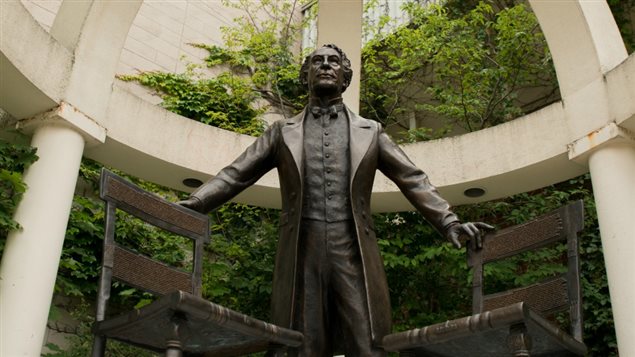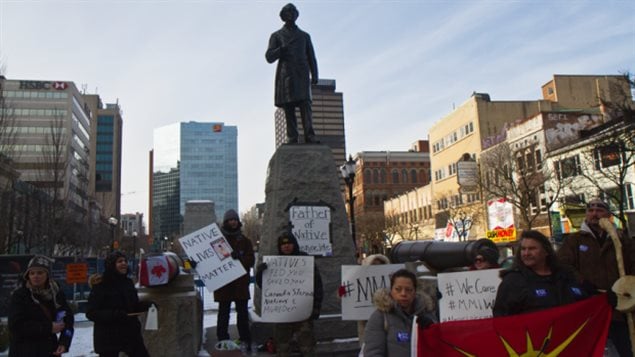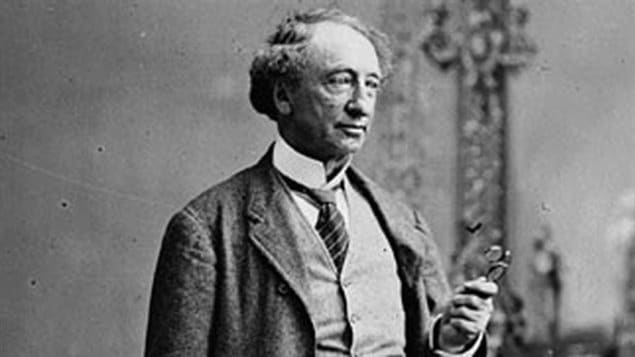In recent years movements have sprung up to remove the names of prominent Canadian historical figures from public buildings, and/or their statues, primarily for their alleged role in attempts to assimilate or eliminate aboriginal culture.
The latest to come under fire is the founder of Canada, Sir John A Macdonald.
Donald Smith (PhD) is professor emeritus of history at the University of Calgary.
Listen
The movement to erase their place in history involves such figures as Edward Cornwallis, founder of Halifax, Sir Hector-Louis Langevin, a father of Confederation, Egerton Ryerson influential educator, and Sir John A Macdonald, father of Confederation and first Prime Minister of Canada.
Cornwallis, whose name has already been removed from at least one Nova Scotia school, was blamed for a scalping edict whereby colonists were paid for Mi’kmaq aboriginal scalps. Evil business for sure.
However, in the article by Len Canfield (linked below) there is some important context given to the the terrible bounty.
Cornwallis’ newly formed and fragile settlement at Halifax and later nearby Dartmouth Nova Scotia, had suffered several guerilla-like attacks and skirmishes by the aboriginal Mi’kmaq who at one point had scalped a group of settlers cutting wood. As a result he issued his edict of the bounty on aboriginal scalps. It didn’t stop the attacks from the Mi’kmaq and the French Acadians, which saw them launch other skirmish attacks including one in May 1751 in which several settlers and soldiers were killed and scalped. In July, Rev. William Tutty of St. Paul’s Church wrote to church officials in London, that the “many outrages and most unnatural barbarities (of the Mi’kmaq) at Dartmouth, (which) have so intimidated the inhabitants that they have mostly deserted it.”

Cornwallis would rescind the scalp bounty in 1752 in the hope of making peace with the Mi’kmaq, but that didn’t happen and skirmishes and killings on both sides continued for several more years. Historically both sides committed atrocities but only Cornwallis is being singled out.
Another tragic (and tragically long) episode in Canadian history lasting some 100 years is that of the “residential schools” whereby native children were removed from their families and placed in often distant schools also with little to no contact with family for extended periods, even years..
The schools, run usually by religious groups under the jurisdiction of the government, reached their peak in the 1930’s with about 90 schools across the country and continued until the last one closed in 1996. The idea was to assimilate the children into mainstream (and Christian) Canadian culture. The schools however were all too often however sites of physical, emotional, and sexual abuse and assaults. A number of the children died at these schools as well.
The residential school system has also been accused of attempting cultural genocide by trying to eliminate aboriginal culture and language in the children.

Sir Hector Louis Langevin has been singled out as an “architect” of the system. Prime Minister Justin Trudeau recently announced that a major building of Canada’s Parliament known as the Langevin block would be renamed, and Langevin Bridge in Calgary Alberta has had the name removed and changed to “reconciliation bridge”.
But it seems (so far) there has been only one single written sentence connecting Langevin to an opinion on the residential schools. As the Minister of Public Works at the time ( May 1883) he would not have been the alleged “architect” of the system actually announced some weeks later, but responsible for having the schools built to his government’s policy.
Recently calls have also been raised to erase the name of Egerton Ryerson from the now prestigious Toronto university that bears his name. The reason again is Ryerson’s involvement with the residential school system as superintendent of education for Canada West.
But historically Ryerson was also sympathetic to aboriginal causes including fighting to end encroachment on their land. He spoke Ojibway and was even given the aboriginal name “Cheekchock” (bird on the wing).
The latest to come under fire is Sir John A Macdonald, founder of Canada. Recently Wilfrid Laurier University in Ontario removed a statue of Macdonald in the light of protests of his role in the residential schools.

The Elementary Teachers of Ontario recently voted to urge school boards, “to examine and rename schools and buildings named after Sir John A. Macdonald, in recognition of his central role as the architect of genocide against Indigenous Peoples.”
But historians will argue that complaint is far too simplistic for a man who accomplished so much for this country, and who would have been seen as very progressive towards aboriginals at the time.
Although Macdonald can be considered the architect of residential schools, he also wanted to negotiated treaties with them, when others at the time thought aboriginals really had no rights.
In addition, several other prime ministers after Macdonald can be faulted for continuing the residential schools.

While his record with the Plains First Nations is blemished, it is not quite the case for aboriginals in eastern Canada where Macdonald proposed his electoral franchise act of 1885 which gave the federal vote to all adult male Indians in Eastern Canada who met the necessary property requirements. Previous enfranchisement had required the surrendering of treaty rights, whereas as Macdonald’s bill gave them the federal vote without surrendering their special rights as “Indians”. This was another effort to bring educated aboriginals into the mainstream system.
Several historians and others say the efforts to remove names and statues as promoted by aboriginal and social justice groups is misplaced, arguing that it would only serve to hide the very history they seek to have known.
Additional information
- National Post- op-ed: C Black: Macdonald removal cowardly
- Halifax Chronicle-Herald: L Canfield: Mar 25/12: Cornwallis-brutal struggle
- Globe and Mail: D Smith: Jan 11/14: Macdonald relationship with aboriginals
- (Toronto) Star: D Smith: Mar 16/16: Macdonald is the story of Canada
- Active History.ca: M Hayday: Langevin-“architect” of residential schools?
- Globe and Mail: Jul 5/17: Ryerson not anti-indigenous
- CBC: A Wherry: Aug 25/17 A question worth asking
- CBC: A Wright: Jul 17/17: renaming a poor way to deal with past
- Canadian Press (via Toronto) Star: Aug 29/17 : Sen. M Sinclair: honour indigenous, not debate Macdonald







For reasons beyond our control, and for an undetermined period of time, our comment section is now closed. However, our social networks remain open to your contributions.